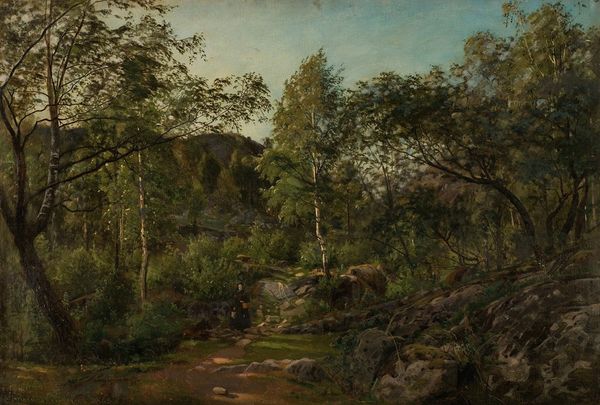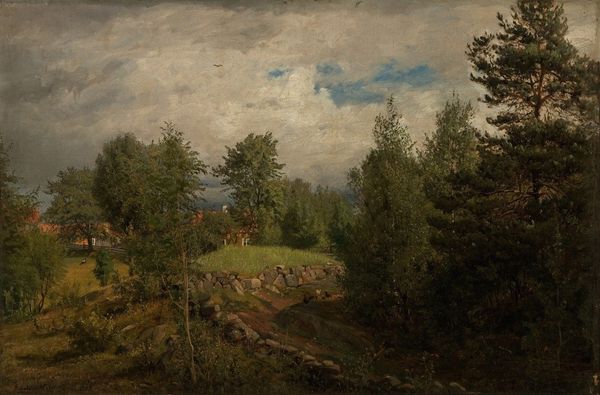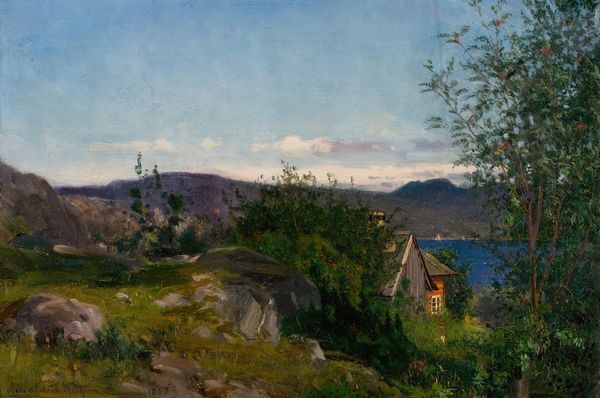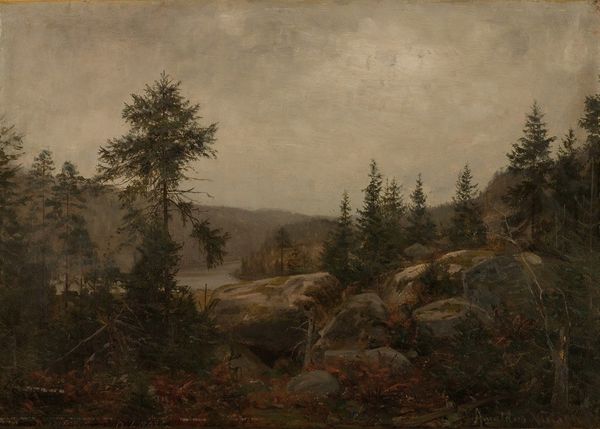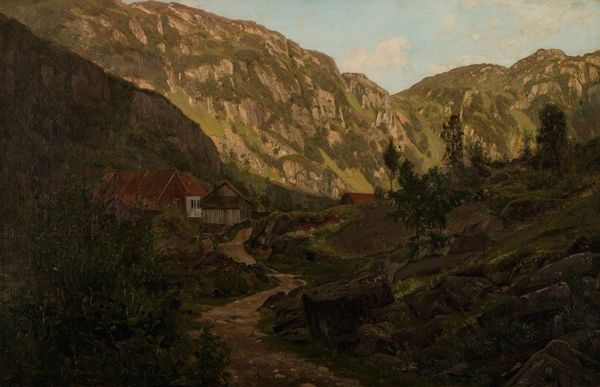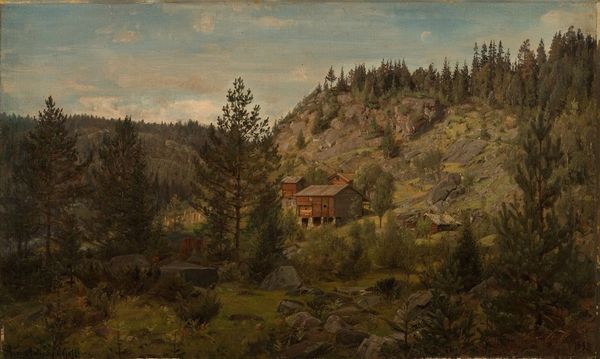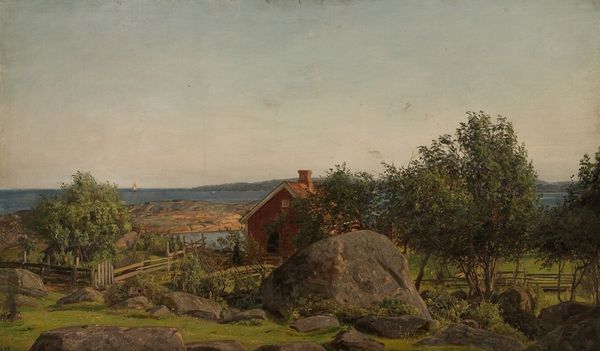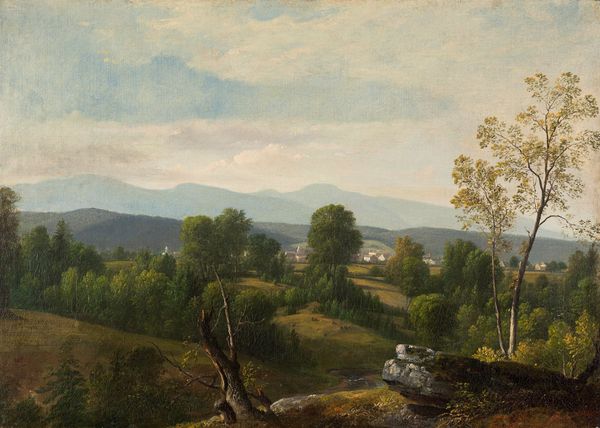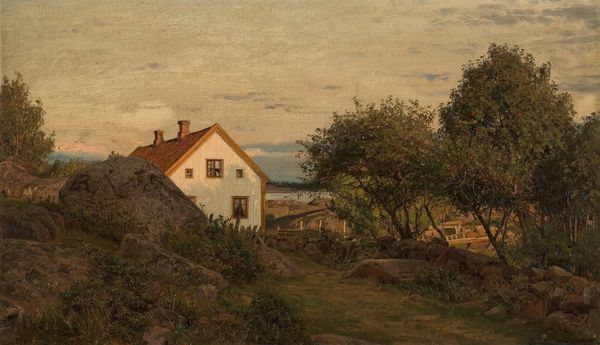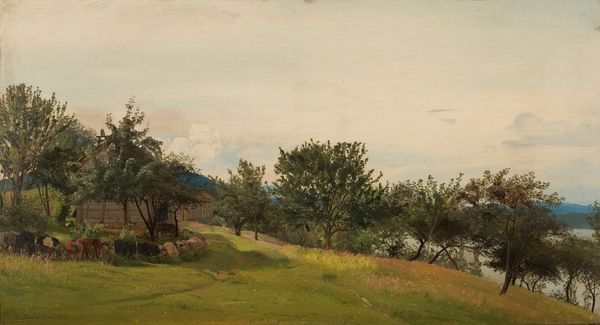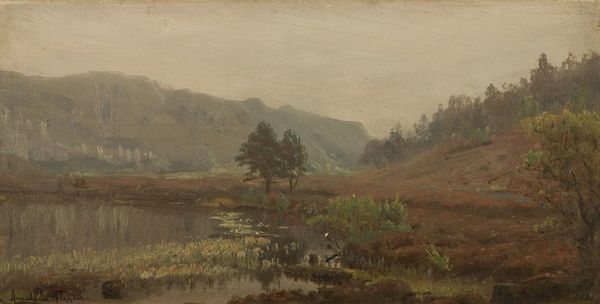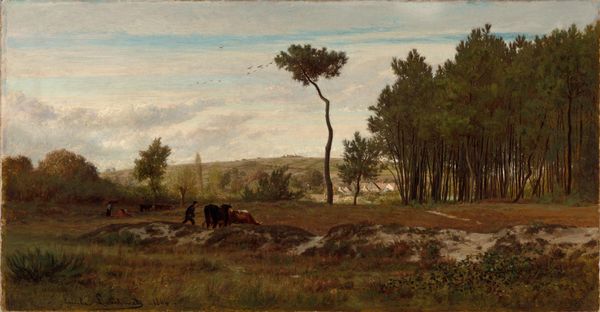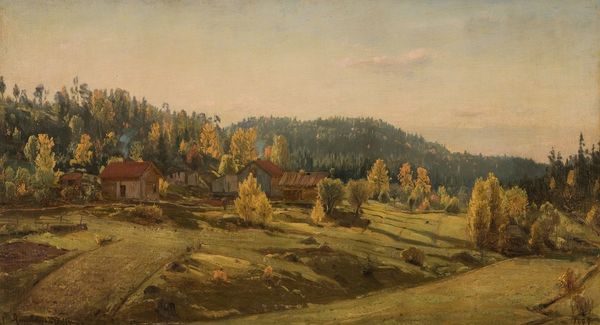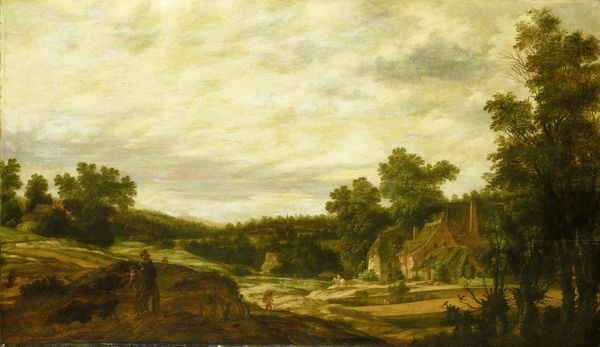
#
landscape
#
impressionist landscape
#
possibly oil pastel
#
oil painting
#
underpainting
#
naturalistic tone
#
seascape
#
painting painterly
#
watercolour bleed
#
watercolour illustration
#
watercolor
Copyright: Public Domain: Artvee
Editor: So, here we have Amaldus Nielsen’s “Morgenstemning ved Frøislandsveien, Mandal,” created in 1863. It's quite earthy and grounding, and I’m immediately drawn to the materiality of the rocks. What stands out to you in this piece? Curator: I'm particularly interested in the material choices Nielsen made and how those relate to the accessibility of art production during this period. For instance, we should think about what kind of pigments would have been available, how readily accessible, and from where those materials would have originated? Were these locally sourced pigments? Did he grind and mix them himself, or were these ready-made and more costly? How might the commercialization of paint have democratized landscape painting, allowing more artists to pursue it as a profession, regardless of academic training? Editor: That's interesting. So you're saying the accessibility of the materials actually influences who could create art? Curator: Precisely. Consider the shift from artists grinding their own pigments, a time-consuming and skilled practice, to the availability of commercially produced paints. This changed the division of labor and the very definition of artistic skill. We need to see it not as a straightforward rendering of a landscape but as a record of the changing conditions of art production in the mid-19th century, in which even this natural scene becomes, indirectly, a commentary on social conditions. What effect do you think the industrialization of the tools has on the work itself? Editor: It makes me consider how that tension might show up in the work. The painting itself shows such a raw landscape. It's also easy to ignore those elements, which can make an assumption of class privilege easy. Curator: Exactly. By considering the conditions of production—the availability of materials and who has access to them—we can gain a more nuanced understanding of the work's meaning and its place within the broader social and economic landscape of the time. Editor: I hadn't thought of it that way before. Now I see it as more than just a landscape; it's a product of its time, materially and socially. Curator: Precisely. It's a landscape painted *by* its time.
Comments
No comments
Be the first to comment and join the conversation on the ultimate creative platform.
